One can mark the boundary of a binary image by bwboundaries function of MATLAB.
What should be done for obtaining boundaries of all segments as a binary image?
I have segmented an image and want to know if there is a way to mark boundaries between each neighbouring segment without applying morphological operations on each segment.
I have added images to illustrate what i want to do. Actually i want to obtain a binary image that keeps pink boundary marker pixels between all segments. Thus, I can overlay them with original image by the help of imoverlay function of Steve Eddins.
Random colored labeling of segmentation result:

Roughly-marked pink boundaries between segments:

